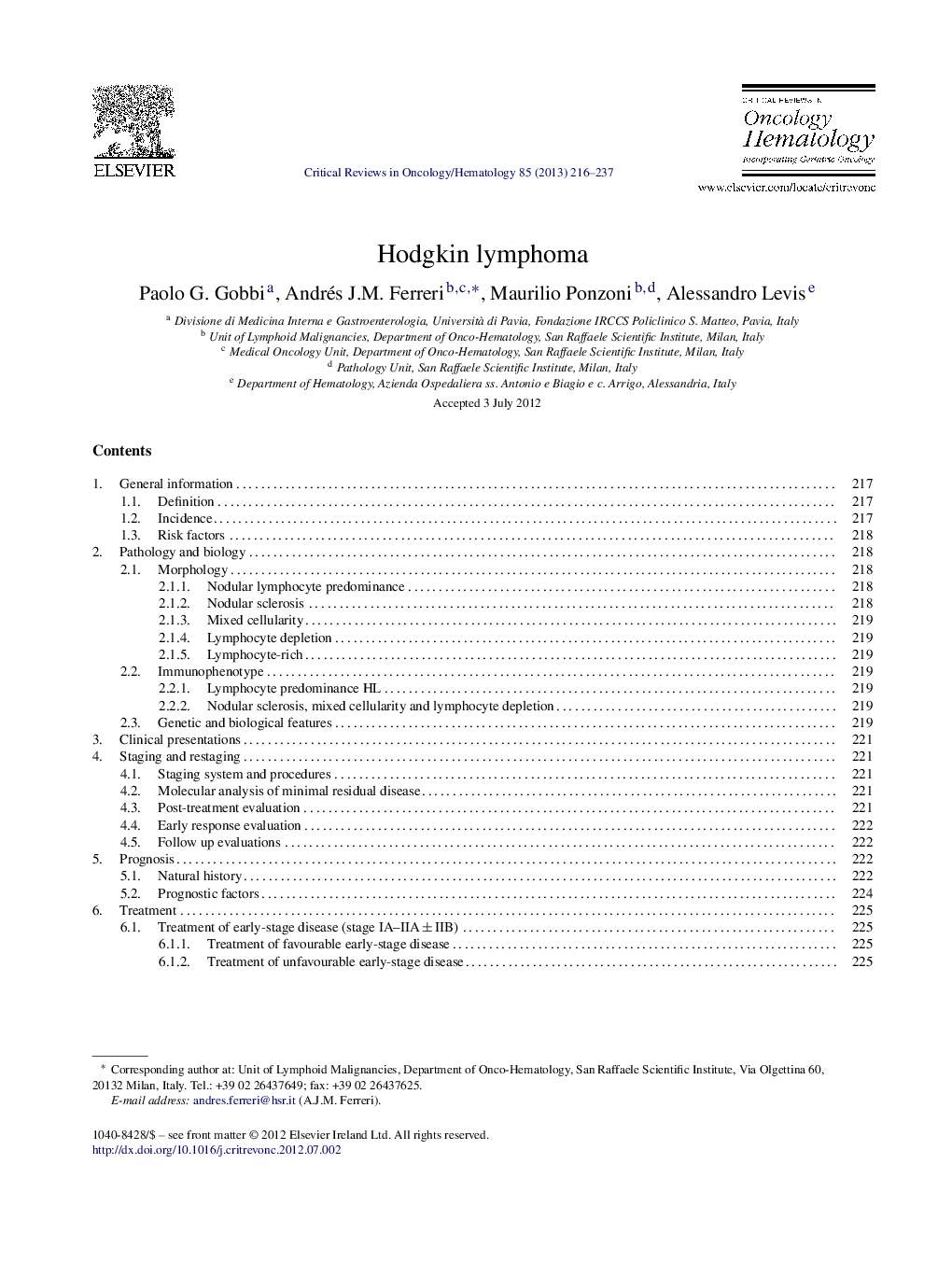| Article ID | Journal | Published Year | Pages | File Type |
|---|---|---|---|---|
| 6113721 | Critical Reviews in Oncology/Hematology | 2013 | 22 Pages |
Abstract
ABVD (adriamycin(doxorubicin), bleomycin, vinblastine, dacarbazine) combination chemotherapy followed by involved-field irradiation is the standard treatment for patients with early-stage HL, with a 5-year OS >95%. Several trials assessing less intensive approaches for patients with favourable early-stage HL are ongoing. More intensified combinations, such as the BEACOPP (bleomycin, etoposide, adriamycin, cyclophosphamide, vincristine (Oncovin), procarbazine, prednisone) regimen, are being investigated, usually in patients with unfavourable early-stage HL and interim PET+. ABVD is the standard chemotherapy treatment also for patients with advanced disease. Although some evidence suggests that more intensive combinations provide better disease control, the inevitable increased risk of relevant late toxicity worries investigators. Consequently, there has been a shift towards investigating the innovative strategy of a more aggressive schedule for patients with 18FDG-PET positive results after the first 2 courses of ABVD. High-dose chemotherapy supported by ASCT (autologous stem cell transplantation) is considered the standard of care in patients with HL which has relapsed after, or is refractory to conventional chemoradiotherapy, while allogeneic transplant is a suitable tool for patients with chemorefractory disease and patients failed after ASCT.
Related Topics
Health Sciences
Medicine and Dentistry
Hematology
Authors
Paolo G. Gobbi, Andrés J.M. Ferreri, Maurilio Ponzoni, Alessandro Levis,
